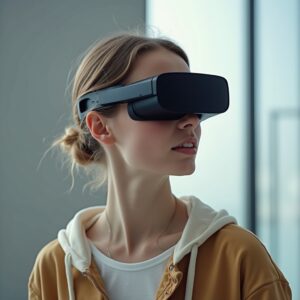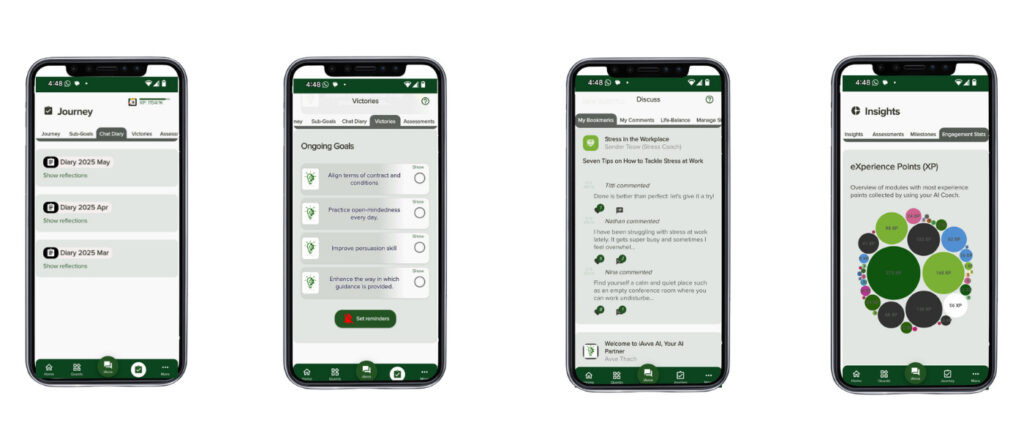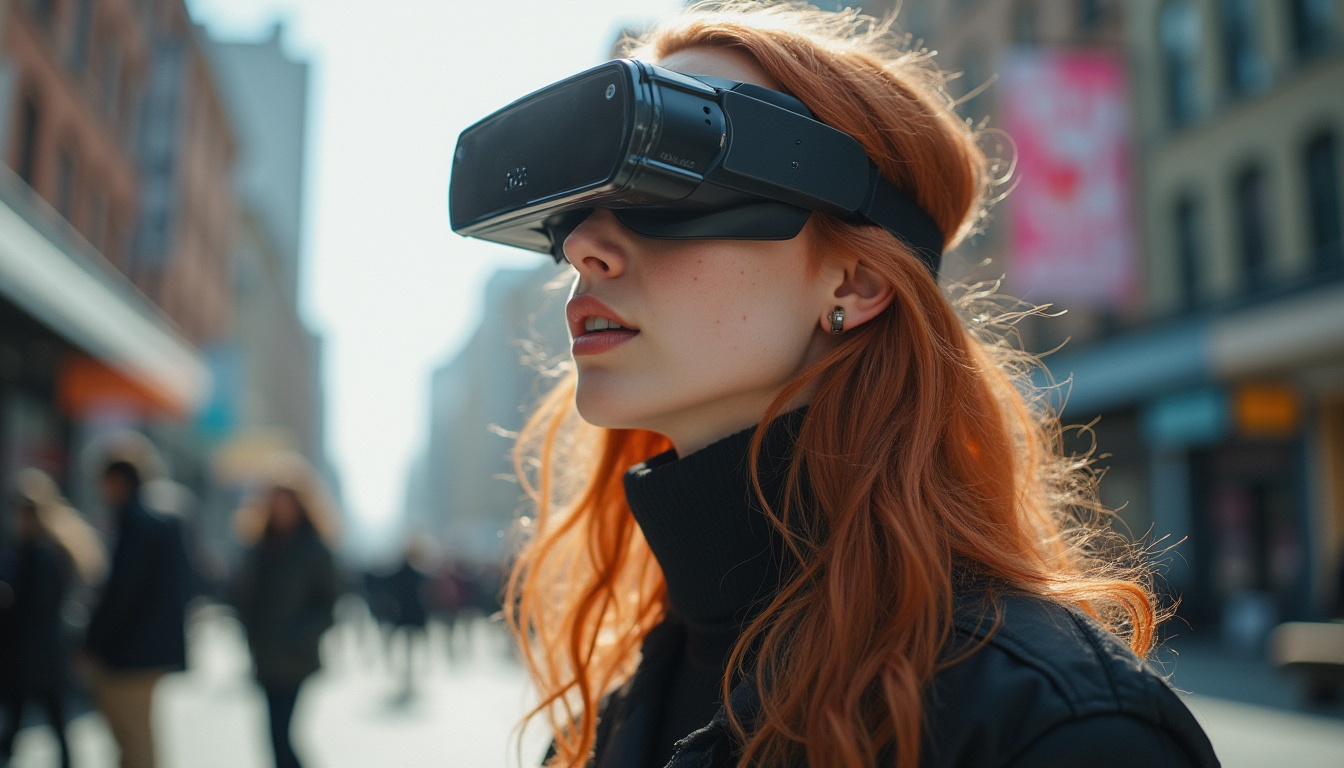Amazon has been at the forefront of technological innovation for years, and its foray into augmented reality (AR) glasses is no exception. The company aims to revolutionize how we interact with the digital world by integrating AR technology into everyday life. With the rise of remote work and the increasing demand for immersive experiences, Amazon’s AR glasses projects are poised to change the landscape of personal and professional interactions.
These glasses promise to enhance productivity, streamline communication, and offer users a seamless blend of the physical and digital worlds. The introduction of AR glasses aligns with Amazon’s broader strategy to leverage cutting-edge technology to improve customer experiences. By harnessing the power of AR, Amazon seeks to create a more engaging and interactive environment for users.
This initiative not only reflects the company’s commitment to innovation but also highlights its ambition to compete with other tech giants in the AR space. As we delve deeper into Amazon’s AR glasses projects, we will explore their features, potential applications, and the challenges they face in a competitive market. Download iAvva AI and start improving your skills today.
Key Takeaways
- Amazon is working on developing AR glasses that will revolutionize the way we interact with technology and the world around us.
- When compared to Meta’s AR glasses, Amazon’s focus on integrating Alexa and its e-commerce platform sets it apart in terms of functionality and user experience.
- The features and capabilities of Amazon’s AR glasses include hands-free access to information, integration with virtual assistants, and seamless e-commerce interactions.
- Potential applications and industries for Amazon’s AR glasses span retail and logistics, as well as healthcare and education, offering a wide range of possibilities for integration.
- Challenges and limitations of Amazon’s AR glasses projects include privacy concerns, user adoption issues, and technological limitations that need to be addressed for successful implementation.
- Amazon’s entry into the AR glasses market will create competition with Meta and other tech giants, potentially shaping the future of augmented reality technology.
- Future developments and innovations in Amazon’s AR glasses projects may include improved user interfaces, expanded functionalities, and enhanced integration with other Amazon services.
- In conclusion, the road ahead for Amazon’s AR glasses involves addressing challenges, leveraging its strengths, and continuing to innovate to establish a strong presence in the AR market.
Comparison of Amazon’s AR Glasses with Meta’s
When comparing Amazon’s AR glasses with those developed by Meta, several key differences and similarities emerge. Meta, formerly known as Facebook, has heavily invested in AR and virtual reality technologies, particularly through its Oculus brand. While both companies aim to create immersive experiences, their approaches differ significantly.
Amazon’s focus appears to be on enhancing productivity and everyday tasks, while Meta emphasizes social interaction and virtual environments. Amazon’s AR glasses are designed to integrate seamlessly with its existing ecosystem of services, such as Alexa and AWS. This integration allows users to access information and perform tasks hands-free, making it a practical tool for professionals.
In contrast, Meta’s AR glasses prioritize social connectivity, enabling users to interact with friends and family in virtual spaces. This fundamental difference in focus shapes the user experience and potential applications of each company’s AR technology.
Features and Capabilities of Amazon’s AR Glasses

Amazon’s AR glasses are expected to come equipped with a range of innovative features that set them apart from competitors. One of the most notable capabilities is voice recognition powered by Alexa. Users can issue commands or ask questions without needing to touch a device, allowing for a truly hands-free experience.
This feature is particularly beneficial for professionals who need to multitask or access information quickly while on the go. Another significant feature is the integration of real-time data overlays. Users can receive notifications, reminders, and relevant information displayed directly in their line of sight.
This capability enhances productivity by allowing users to stay informed without interrupting their workflow. Additionally, Amazon’s AR glasses are likely to incorporate advanced camera technology for object recognition and augmented navigation, further enriching the user experience.
Potential Applications and Industries for Amazon’s AR Glasses
| Industry | Potential Applications |
|---|---|
| Manufacturing | Remote assistance, equipment maintenance, and quality control |
| Healthcare | Medical training, telemedicine, patient monitoring |
| Retail | Virtual try-on, in-store navigation, and inventory management |
| Education | Interactive learning, virtual field trips, and language translation |
| Construction | Blueprint visualization, on-site guidance, safety training |
The potential applications for Amazon’s AR glasses span various industries, making them a versatile tool for both personal and professional use. In healthcare, for instance, medical professionals could use AR glasses to access patient information during procedures or visualize complex data in real-time. This capability could lead to improved patient outcomes and more efficient workflows in hospitals.
In retail, Amazon’s AR glasses could transform the shopping experience by allowing customers to visualize products in their homes before making a purchase. Imagine trying on clothes virtually or seeing how furniture fits in your living room—all made possible through augmented reality. Furthermore, industries such as manufacturing and logistics could benefit from hands-free access to instructions and data, streamlining operations and reducing errors.
Challenges and Limitations of Amazon’s AR Glasses Projects
Despite the promising potential of Amazon’s AR glasses, several challenges and limitations must be addressed. One significant hurdle is user acceptance. Many consumers may be hesitant to adopt new technology, especially wearable devices that could alter their daily routines.
Overcoming this skepticism will require effective marketing strategies that highlight the benefits and ease of use of the glasses. Another challenge lies in privacy concerns. As AR glasses often incorporate cameras and data collection features, users may worry about surveillance and data security.
Amazon must navigate these concerns carefully by implementing robust privacy measures and transparent data usage policies. Additionally, technical limitations such as battery life, weight, and comfort will need to be addressed to ensure that users can wear the glasses for extended periods without discomfort.
Market Impact and Competition with Meta

The introduction of Amazon’s AR glasses is likely to have a significant impact on the market, particularly in competition with Meta’s offerings. As both companies vie for dominance in the AR space, their strategies will shape consumer preferences and industry standards. Amazon’s focus on productivity and integration with its existing services may attract professionals seeking practical solutions. At the same time, Meta’s emphasis on social interaction could appeal to a younger audience looking for immersive experiences.
Market analysts predict that the competition between these tech giants will drive innovation and lead to rapid advancements in AR technology. As both companies invest heavily in research and development, consumers can expect improved features, enhanced user experiences, and more affordable options in the coming years. This competitive landscape will ultimately benefit users as they gain access to cutting-edge technology that meets their needs.
Future Developments and Innovations in Amazon’s AR Glasses Projects
Looking ahead, several exciting developments are anticipated in Amazon’s AR glasses projects. The company is likely to continue refining its technology based on user feedback and market trends. Future iterations may include improved battery life, lighter designs, and enhanced display capabilities that provide clearer visuals in various lighting conditions.
Moreover, as artificial intelligence continues to evolve, Amazon may integrate more advanced AI features into its AR glasses. This could include personalized recommendations based on user behavior or context-aware assistance that adapts to different environments. Such innovations would further enhance the functionality of the glasses and solidify Amazon’s position as a leader in the AR market.
The Road Ahead for Amazon’s AR Glasses
In conclusion, Amazon’s AR glasses projects represent a significant step forward in integrating augmented reality into everyday life. With their focus on productivity, seamless integration with existing services, and potential applications across various industries, these glasses have the potential to transform how we interact with technology. However, challenges such as user acceptance and privacy concerns must be addressed for widespread adoption.
As competition with Meta intensifies, both companies will continue to innovate and push the boundaries of what is possible with AR technology. The future looks promising for Amazon’s AR glasses projects as they pave the way for new experiences that blend the physical and digital worlds seamlessly. As we move forward, it will be fascinating to see how these developments unfold and shape our interactions with technology in the years to come.










Leave a Reply